Producing sweeteners locally
By Simon St.Laurent
One of the most common complaints about the industrial age is its constant and seemingly ever-growing use of sweeteners. Whether it was cheap sugar (and rum) in the early 1800s, saccharin in the early 1900s, or high-fructose corn syrup in the late 20th century, sweeteners have had a bad—but tasty—reputation.
In a local context, however, sweeteners are extremely important. Many of the local fruits that contain Vitamin C, for instance, are difficult eating unless sweetened. Aronia Melanocarpa is called "chokeberry" for a reason. Black currants are difficult eating off the bush. The more familiar perennial rhubarb also becomes far more enjoyable with sweetening. Even in less extreme cases, sweeteners can certainly add enjoyment to foods otherwise too bitter or too bland to be attractive. Sugar is also very important in preserving food, where it creates a hostile environment for bacteria as well as a delicious treat.
Many different sweeteners are available today, though they may become more or less important in localization or energy descent situations. Some require industrial facilities and major energy inputs, and a few are dangerous, but many familiar sweeteners will likely remain available into even an uncertain future.
Sugar and Molasses
Sugar cane, a tropical plant, doesn't grow in Central New York. United States sugar producers are in Louisiana and Florida, though sugar refineries have been prominent features of port cities along the coasts. Modern sugar production relies on energy-intensive industrial processing and distribution. Cane sugar's long history, however, suggests that it and its by-product molasses can still be valuable with reduced processing, as extracting sugar is relatively simple and can be fueled with the cane that created it[1]. Sugar distribution and storage are similarly simple, as it is easily packed for safe storage.
Sugar produced from beets has many of the same issues as cane sugar, but unlike sugar cane, sugar beets can be grown in New York State. However, the quantity of sugar beets currently grown is small enough that the USDA National Agricultural Statistics Service[2] doesn't even offer sugar beets as a query option for New York. Today, sugar beets receive more industrial processing than does sugar cane, despite containing 17% sugar while cane contains 10%. Unlike cane, beets cannot easily be processed using their byproducts for fuel. (The byproducts are typically used as animal feed.) Sugar beets are also typically used as a crop in rotation, so the yield per acre is substantially lower than that of cane.[3] Sugar beets can be processed at home on a small scale by chopping, boiling, and evaporating, however.[4]
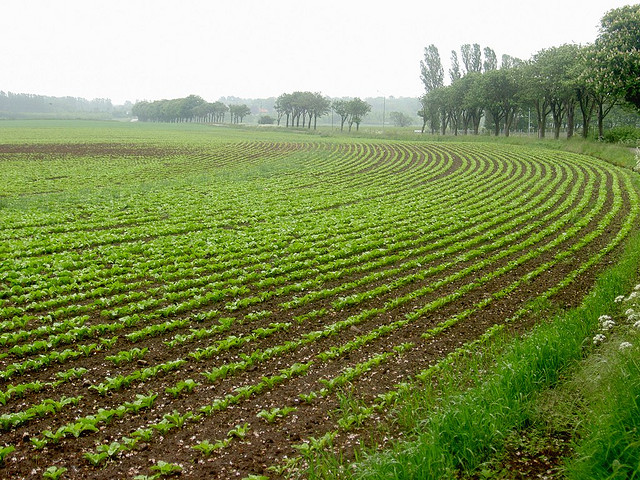
Figure 1. Sugar beet field, Sweden (original source, used under Creative Commons license from Dag Endresen.)
The primary questions about sugar in an energy descent situation revolve around price, distribution, and quality.
Though sugar in the United States is expensive relative to sugar in the rest of the world (roughly double the Canadian price because of American import quotas[5]) it remains a remarkably cheap commodity by historical measures. As the energy costs of sugar refining climb, those prices will likely climb. Diversion of sugarcane to ethanol production may also shrink the available supply of sugar substantially, also increasing the price.
If energy costs climb, the cost of distributing sugar, especially cane sugar coming from a distance, will climb. Sugar works well with slower and less energy-demanding forms of transport, but transitions to new distribution patterns may take time. Disruptions may also be more difficult because of the longer supply chain of cane sugar.
While less-refined sugar has become a high-end product recently, most people still expect their sugar to be a pure white with a relatively neutral taste and predictable cooking behavior. If the extra energy cost of refining to white sugar climbs, more people may need to get used to less-refined sugar.
It may be possible to create a substantial sugar beet industry in New York State—or it may make sense to count on sugar's relatively easy tradability to keep it available.
Corn sweeteners
Corn-based sweeteners thrive today because of a combination of the import quotas noted above and subsidies for corn production. Dent corn is converted into corn starch by a wet millling process and then treated with enzymes to produce corn (glucose) syrup. High-Fructose Corn Syrup (HFCS) is made by an additional enzyme process to convert much of that glucose to fructose.[6] This is a strictly industrial energy intensive process:
Corn wet milling is the most energy intensive industry within the food and kindred products group, using 15% of the energy in the entire food industry. After corn, energy is the second largest operating cost for corn wet millers in the United States. A typical corn wet milling plant in the United States spends approximately $20 to $30 million per year on energy.[7, page 3]
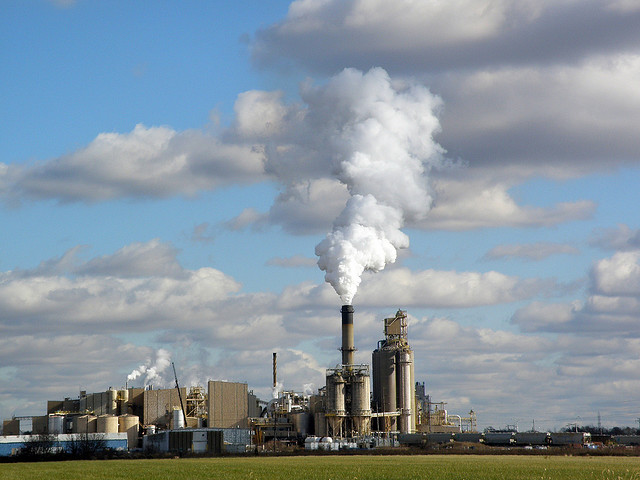
Figure 2. Wet corn mill (original source, used under Creative Commons license from Jim Hammer.)
While dent corn can be grown locally, the industrial scale and energy requirements of wet corn milling seem to put local corn syrup out of reach. There was a corn wet mill in Montezuma, New York, just up Cayuga Lake, but it closed in 1986.[7, page 73] Like sugar, corn syrup can be easily transported and stored.
Artificial sweeteners
If you count the extremely toxic "Sugar of Lead" (lead acetate), artificial sweeteners have been around for thousands of years, though the modern history usually begins with saccharin in 1879. While it is likely possible to create most of these sweeteners in the laboratory facilities available at Cornell, most of them are produced today in large volume at chemical plants.
As many artificial sweeteners (notably neotame, aspartame, saccharin, and sucralose) are sweeter by volume than sugar, and store reasonably well, they may be easier trade goods than sugar itself. Xylitol, mannitol, and sorbitol, the sweet alcohols, are roughly as sweet as sugar and are useful both to sweeten food for diabetics and potentially as a tooth decay preventative.
Lead acetate deserves special attention as a danger, as it is not difficult to synthesize from lead and has commonly been used as an adulterant in foods and drinks.
Honey
Honey is a commonly available sweetener that can be produced in large quantities in the Finger Lakes region. Beekeepers encourage hives to produce more honey than they need to survive the winter, then take the extra honey for human consumption.
Beekeeping is a complex art, though it scales down to the household level more easily than the production of many other sweeteners. Keeping hives alive has become more difficult in recent years with the spread of pests, notably varroa mites, but the infrastructure and learning investments required to become a successful beekeeper are still fairly small.
Until the mid-19th century, beekeepers used hollow logs or straw houses, called skeps, for their bees. While these worked, they didn't allow beekeepers to inspect the hive for disease, and the hive usually had to be destroyed to retrieve the honey. Because of disease issues, skeps are illegal in the US.
Most beekeepers use Langstroth hives, rectangular boxes filled with frames in which the bees make their home. So long as beekeepers maintain precise distances between equipment inside of the hive, the bees will avoid gluing everything together. This flexibility makes it simpler for beekeepers to inspect the hive, as well as to add and remove equipment to gather honey. Langstroth equipment does require a fairly substantial investment, and most beekeepers buy sturdy frames filled with wax or plastic foundation printed in a hex pattern. This gives bees a bit of a head start, and reinforcements in that foundation make it much easier to extract honey by spinning the frames mechanically.
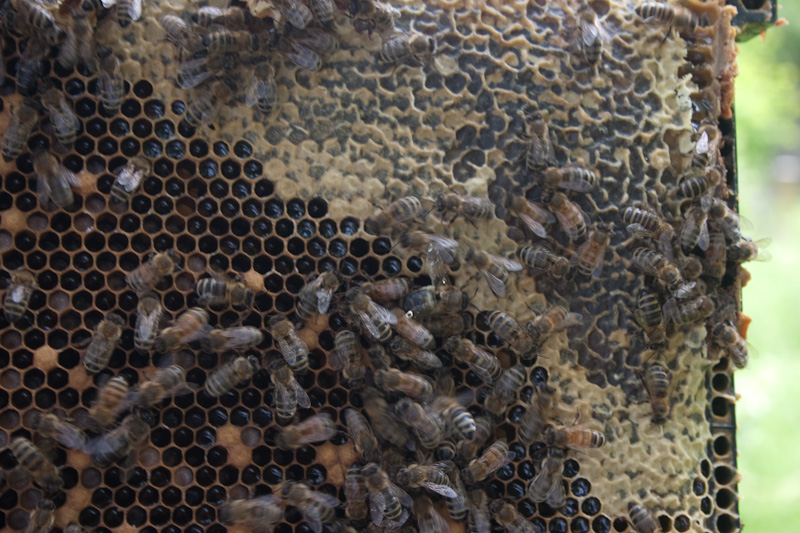
Figure 3. Bees on framed comb, honey top right, brood lower left. (Photo Simon St.Laurent.)
It is possible, though slow, to replace frames with bars with a simpler strip of wax on the bottom and have the bees build their comb on that, but the frames will be less regular and more difficult to use with an extractor. Taking that idea further, some beekeepers are using top bar hives. These hives fit into a single box organized horizontally rather than stacked vertically. The bees build their own comb, and beekeepers who want to collect the honey press or cut the comb instead of spinning it. This destroys the comb, requiring the bees to work harder to make new honey, but requires less dedicated equipment.
While much beekeeping equipment can be built from readily available wood and metal, two pieces of the beekeeping system are more difficult. The foundation is generally manufactured, though it can be created on a smaller scale using old equipment like some of that on display in the Dyce Lab at Cornell. The harder challenge is the supply of bees and queens. New bees and queens can be raised in the north, but at present most nurseries for bees are considerably farther south and rely on express delivery services. Local breeding has become more popular as a way to improve bees, so this may not remain an issue for very long.
Beekeepers are facing an ever-wider variety of diseases and parasites. While Colony Collapse Disorder (CCD) made headlines, most beekeepers are battling a variety of problems, most notably varroa mites. Chemical solutions can keep mites at bay, but mites seem likely to be a permanent feature of beekeeping at this point. Integrated Pest Management (IPM) mixes chemical and other approaches, focusing on keeping hives going. Inspection, now an optional event in New York State, may become especially important again if beekeepers have to rely on their own production of bees rather than importing new ones from the south.
While some beekeepers might find warmer weather convenient, changing weather patterns, especially if extreme weather becomes more common, could create difficulties. Rain and snow can keep bees in their hives and prevent their collecting food, while drought can delay or hinder plants from flowering. Bees also fly much less when temperatures are 90° F or higher, staying home to cool the hive. Bears moving north present another challenge.
Maple Syrup and Maple Sugar
Upstate New York has been producing maple syrup and maple sugar for centuries. Native Americans taught European settlers about collecting and concentrating sap, and Europeans gradually technologized and standardized the process. It was a key part of the development plan for early Cooperstown, though visions of maple fortunes faded quickly[8], and the energy and infrastructure challenges of making maple syrup have kept it from competing with cane or beet sugar. (Beet syrup starts at a concentration of 6 parts water to 1 part sugar, cane syrup starts at 10:1, and maple sap is at 40:1.)
While many modern maple syrup producers use plastic tubing to collect the sap, simple metal taps and buckets can provide a sustainable (if labor-intensive) collection system. Even a simple pot can work for boiling down sap, though large flat pans and especially more complex flue pans make it much easier to evaporate sap down to syrup. An indoor wood stove already used for heat can boil syrup at the household level, while a sugarhouse with vents is likely a better idea for a larger pan. A sugarhouse will need a dedicated supply of wood (or other fuel), but that is frequently available in the same areas as maple stands.[9]
While sugar maples (Acer saccharum) are the traditional tree for maple syrup production, red, black, and some silver maples can also be tapped, as can box elders and birches.
At any scale, however, maple faces some challenges. The flow of sap depends on the weather, particularly on the contrast between daytime and night time temperatures. Sap flows during the day, carrying sugar from the roots. A winter that turns too suddenly into spring can disrupt maple production, as can seasonal storms that make it difficult to collect and evaporate syrup. The short season and its unreliability make maple syrup a risky product. While it is not difficult to preserve maple syrup, its greater water content makes it more likely to spoil than honey or sugar. (Maple syrup can be made into maple sugar, at a large energy cost in additional refining.)
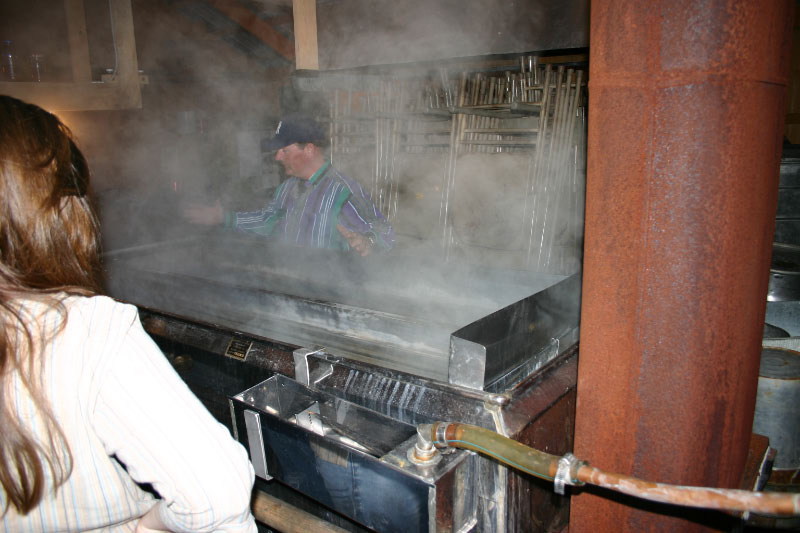
Figure 4. Evaporating syrup in Marathon, NY (photo Simon St.Laurent)
Maples also face environmental challenges. Climate change may shift the range northward, giving hickories and oaks an advantage while limiting maples. Long-term changes in spring weather patterns could also complicate or reduce the maple season further. The Asian Long-Horned Beetle, already present in New York City, attacks and weakens maple trees and a variety of other species. Larvae tunnel through the wood, weakening the tree.[10] These beetles may reduce the number of healthy maples and make it more difficult for new maples to survive.
Sorghum
Sweet sorghum, though traditionally grown further south, can produce a syrup similar to molasses, as well as silage or forage for animals. Some farmers are experimenting with it in Tompkins County as a cover crop and animal feed today, and it may be an appealing option if climate change extends the growing season.
Processing sorghum for syrup requires stripping the leaves and seed head off the cane, then squeezing the juice out of it and evaporating and skimming that juice. Crushing the cane is generally done with a simple mill, and the resulting juice yields about a gallon of syrup from ten gallons of juice.[11]

Figure 5. Sorghum mill (original source, used under Creative Commons license from g-s-h.)
Fruit Juices
Fruit juices and concentrates, and even applesauce, are classic sweeteners. While whole fruits are, of course, a delicious way to enjoy fruits, juicing and similar processes make it much easier for people to consume fruits that are bruised, damaged, or simply useful as a background sweetener rather than as the primary flavor. Commonly available apple and grape juices, both products of Upstate New York, are regularly used to provide bulk and sweetness to more expensive juices like cranberries, blackberries, blueberries, or (more recently) pomegranate.
Like fruits, fruit juices can be canned or frozen. They require more energy input to preserve than do sugar or honey, but are easier to create with ordinary pots or pans or with simple tools like steam juicers. They scale up to greater volumes easily as well.
Malt
Grains are another common source of sweetness. Malting grain is a fairly complex process involving drying, storing, adding water, partially germinating, and then processing and often mashing. Today most malting relies on industrial equipment and purpose-built malting floors, but the basic steps can be done with simple equipment on a wide variety of scales.
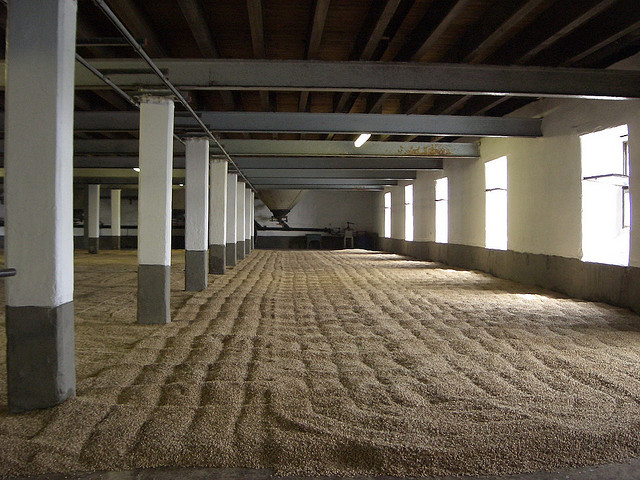
Figure 6. Malting floor (original source, used under Creative Commons license from Chris Sharp)
Malt is most commonly used as a fermentation base for beer and whiskey, but it is also a key component in malted milks, malt vinegar, and malt candies. Barley is the most common grain used for malting. Many grains are bred specifically to provide the enzymes needed for the malting process.
Stevia
Stevia is a relative newcomer, at least in the United States. The plant Stevia rebaudiana, originally from South America, has leaves that are approximately 30 times sweeter than sugar, and its core sweetening compounds are approximately 250 times sweeter. The Food and Drug Adminstration has allowed the sale of stevia as a food supplement but not as an ingredient, though stevia-derived sweeteners are now legal for use.
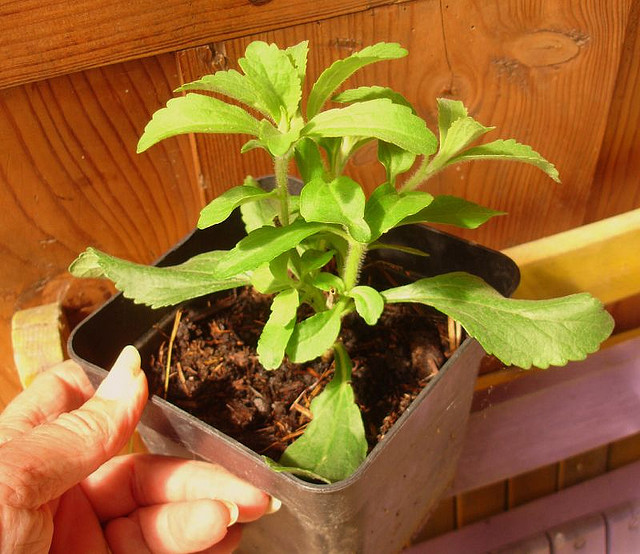
Figure 7. Stevia plant. (original source, used under Creative Commons license from Irene Kightley)
Stevia's climate expectations limit its use for large-scale plantings in Tompkins County. However, it may prove useful as a household-scale sweetener, especially for people who have difficulties with other sweeteners. It can grow as a window plant, getting the sun that it needs while avoiding the cold. Stevia leaves can be used directly as a sweetener without further processing.
Alcohol
All of the natural sweeteners except stevia can be converted into alcohol through fermentation, possibly followed by more energy-intensive distillation. Malt is traditionally used for beer; fruit juices for wine; hard cider, and brandies, honey for mead; and sugar and molasses for rum. In addition to its intoxicating qualities, alcohol can be used as a preservative and to sterilize medical equipment and wounds.
In an energy descent situation, however, sugars are perhaps dangerously attractive as an easy source of alcohol for fuel. Competition between food and energy uses of sugar will likely increase demand (and prices) for sweeteners.
Policy Suggestions
Some projects supporting local sweetener production already exist. Cornell's Master Beekeeper program and its work with maple products in the Arnot Teaching and Research Forest focus on honey and maple syrup. Cornell Cooperative Education offers sessions on fruit juices and preserving.
Some sweeteners, notably cane sugar and corn syrup, are unlikely ever to become local products, and most of the artificial sweeteners are unlikely to become economical local products.
Sorghum and stevia originated in far warmer climates than Tompkins County has to offer, but both are worth exploring in different contexts. For now, sorghum seems useful primarily as a cover crop, with some potential for use as a sweetener. Stevia is more promising because of its ability to grow as a houseplant, and could be an excellent target for Cooperative Extension projects and local nursery development.
There is one great danger here, something that local public health officials should watch for: the possible return of lead acetate. At present, this threat is discussed mostly in the context of imported food, but it could just as easily surface in local food. Watching for symptoms and developing testing protocols could become much more important if the price of sweeteners climbs.
[1] http://www.sucrose.com/lcane.html
[2] http://www.nass.usda.gov/QuickStats/Create_Federal_All.jsp
[3] http://www.sucrose.com/lbeet.html
[4] http://www.grandpappy.info/rsugar.htm and http://www.ehow.com/how_2177131_sugar-beets.html
[5] http://edis.ifas.ufl.edu/sc032
[6] http://www.madehow.com/Volume-4/Corn-Syrup.html
[7] http://www.energystar.gov/ia/business/industry/LBNL-52307.pdf , page 3 and 73
[8] Taylor, Alan. William Cooper's Town: Power and Persuasion on the Frontier of the Early American Republic (Vintage, 1996), 130-4
[9] Perrin, Noel. Making Maple Syrup (Storey, 1983)
[10] http://www.dec.ny.gov/docs/lands_forests_pdf/alb.pdf
[11] http://www.herculesengines.com/sorghum/default.html and http://www.motherearthnews.com/relish/making-sorghum-zb0z11zalt.aspx
Categories
agriculture , food6 Comments

As a local maple producer, I can attest to the hard work and risk that goes into this precious product, however, NY State is currently tapping only around 2% of our available maple trees. It's an untapped resource...
There are other potential byproducts of the sugaring process such as distilled water which some are already bottling and selling using condensing units, as well as heat and energy. I've talked with a biomass expert about my operation and he had many suggestions on how to capture energy either for cooking in the shack, electricity production (again for use in the shack and on the farm) and to produce biochar. Maybe we should be pushing Cornell to do some research in this arena...
I'm happy with the stevia that I have grown this summer, and happier to learn I can move it indoors to my kitchen window for the winter. It has been super easy to use in ice tea. I just add a few leaves of stevia along with a few leaves of mint.
You mention the Asian Long-Horned Beetle infestation in New York City, but the much more dangerous infestation is in Worcester, MA, a small city surrounded by forest. The quarantine zone there is now 74 square miles, including several surrounding towns. If the beetles escape eradication efforts there, they have access to contiguous forest that extends throughout the Northeast. And sugar maple is only one of a dozen or more species that they feed on.
Our one saving grace is that they travel slowly. Usually they just move to the next tree over when the one they're in dies. Their major mode of transportation is people driving around with firewood: DO NOT, under any circumstances, drive around with firewood.
Just want to mention one sweetener that is not largely well known, that happens to be produced in the Finger Lakes, Apple Cider Molasses. It was originally used by frontier cooks when sugar or molasses was unavailable.
Similar to molasses in consistency,with different flavor, it is made from apple cider. Can be used in all the same applications as molasses, additionally made into syrups, glazes, binder in granolas, as well as salad dressing.
Here is the website, www.allenshillfarm.com to the folks (my parents) who make it. Not meant to be a plug, but rather to make you aware of another sweetener alternative that exists.
Simon--Another source of sweeteners is dried fruits. Dried fruits aren't something you can stir into your coffee or tea, but they are extensively used to make puddings, pies, cookies, muffins and other baked goods as well as being important ingredients in granola and trail mixes. Raisins are perhaps the best example of a dried fruit used as a sweetener. Some of the local varieties of grapes could make raisins. Central New York weather is not good for air drying sweet fruits--grapes, peaches, apricots, apples, etc. However, there are several versions of solar driers that would work well--no other energy inputs needed except a sunny day. I hope this is useful input. Tom
I have been growing and making my own concentrated stevia for about the last 3 years. Aside from Honey (which with the help of my new hive, I will be producing on my own), it's all I use.
I live in Texas and because of the nature and climate, Stevia is seasonal. However, if you start growing in the spring with 2 plants and cut them back after the "stalks" grow about 2 1/2 feet, you can get another harvest later in the year.
Those two plants provide me and my wife with enough stevia concentrate for a year.
The after taste takes a little getting used to, but frankly, I don't even notice it anymore.
Check out the benefits of it on wikipedia, especially for diabetics.
Or just go to my blog and see how you can do it yourself.
http://suburbandweller.blogspot.com/2010/08/i-got-your-stevia-right-here.html
Cheers!